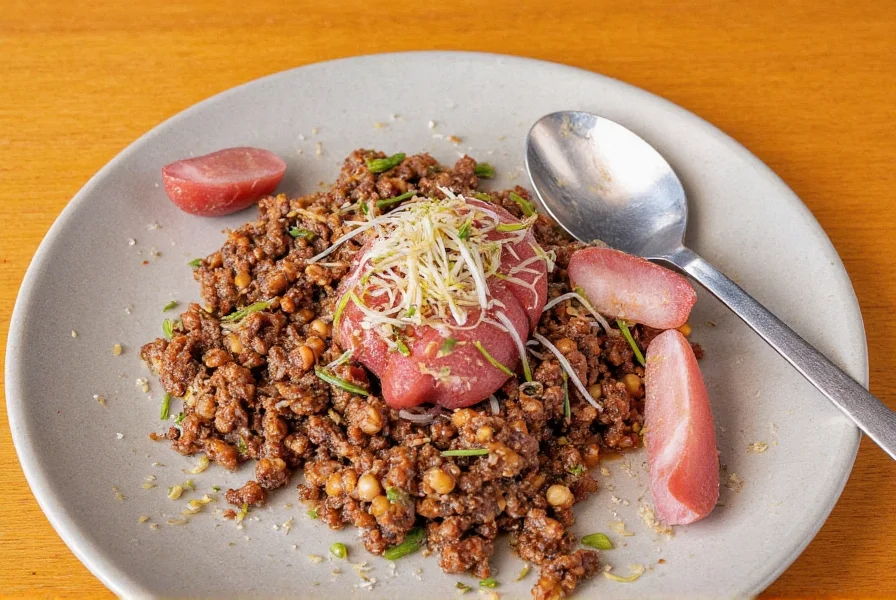10 Irresistible Brazilian Spices That Will Spice Up Your Life (And Kitchen!) 🌶️🎉
Table of Contents
- Introduction: The Soul of Brazilian Cuisine
- Top 10 Must-Try Brazilian Spices
- How to Use These Spices Like a Local Chef
- Buying Guide: Choosing Authentic Brazilian Spices
- Conclusion: Taste the Culture, One Spice at a Time
Introduction: The Soul of Brazilian Cuisine
Brazilian cuisine is a delicious fusion of indigenous, African, and European influences. Known for its bold flavors and vibrant colors, it’s no wonder that brazil culture food has become increasingly popular worldwide. But what really ties these diverse elements together? You guessed it — spices.
From fiery chilies to earthy roots, Brazilian spices bring depth, warmth, and excitement to every dish. Whether you're cooking feijoada or preparing fresh tropical salads, the right blend of spices can transform your meal into an authentic Brazilian experience.

Top 10 Must-Try Brazilian Spices
Here's our curated list of the top 10 Brazilian spices that you must try if you want to truly capture the essence of brazil culture food. Each spice tells a story, from its origin to its flavor profile.
- Cayenne Pepper (Pimenta) – The fiery heartbeat of Brazilian cuisine
- Annatto (Urucum) – Adds color and mild earthiness
- Cumin (Cominho) – Deepens flavor in meat marinades
- Coriander (Coentro) – Freshness with a South American twist
- Parsley (Salsa) – A staple in green sauces and stews
- Bay Leaf (Louro) – Used in beans and rice dishes
- Dried Onion (Cebola em Pó) – For quick aromatic base building
- Smoked Paprika (Pimentão Defumado) – Adds depth and smokiness
- Lemon Grass (Capim-Limão) – Citrusy note perfect for fish and soups
- Dendê Oil – Technically not a spice but essential in Bahia-style cooking

Flavor Profile Comparison Table
| Spice | Heat Level | Flavor Notes | Best In |
|---|---|---|---|
| Cayenne Pepper | High 🔥 | Fiery, peppery | Hot sauces, grilled meats |
| Annatto | Low 😊 | Earthy, nutty | Rice, moqueca |
| Cumin | Mild 👍 | Warm, smoky | Bean dishes, stews |
| Coriander | Mild 👍 | Herbal, citrusy | Salsas, marinades |
| Dendê Oil | None 🌿 | Rich, fruity, deep orange | Acarajé, Bahian dishes |
How to Use These Spices Like a Local Chef
Now that you know the spices, let’s talk about how to use them! Here are some pro tips to help you infuse Brazilian soul into your kitchen:
- Start with the Base: Most Brazilian dishes begin with onions, garlic, and olive oil. Add bay leaf and cumin early to build depth.
- Toasted vs. Raw: Toasting annatto or coriander seeds enhances their flavor before grinding.
- Dendê Magic: Don’t be shy — a splash of dendê oil turns any stew into a showstopper. Just remember it’s strong!
- Add Herbs at the End: Parsley and cilantro lose freshness when overcooked, so sprinkle them on last.
- Balance Heat: Cayenne is powerful. Pair it with lime or creamy ingredients like coconut milk.

Buying Guide: Choosing Authentic Brazilian Spices
Finding quality Brazilian spices can be tricky outside of Brazil, but once you know where to look, it becomes easier. Here’s a breakdown of what to consider when purchasing each spice:
Cayenne Pepper
- Features: Ground chili powder made from dried red peppers
- Advantages: Adds instant heat and depth
- Use Cases: Feijoada, molho apimentado (hot sauce), churrasco rubs
- Target Audience: Home cooks looking for heat
- Occasions: Grilling parties, spicy stew nights
Annatto (Uruçum)
- Features: Seeds used whole or ground; sometimes sold as paste or oil
- Advantages: Natural coloring agent with mild flavor
- Use Cases: Rice, moqueca, polenta
- Target Audience: Foodies who love aesthetics
- Occasions: Family dinners, photo-worthy meals
Cumin
- Features: Whole or ground seeds with warm aroma
- Advantages: Boosts umami and complexity
- Use Cases: Beans, braised meats, sautéed veggies
- Target Audience: Savory dish lovers
- Occasions: Sunday roasts, hearty stews
Dendê Oil
- Features: Vibrant red palm oil, rich in beta-carotene
- Advantages: Essential for Bahian dishes
- Use Cases: Acarajé, caruru, seafood stew
- Target Audience: Afro-Brazilian cuisine enthusiasts
- Occasions: Cultural festivals, special dinners

Buying Tips
- Look for spices labeled “natural” without preservatives
- Buy from specialty stores or Latin American markets
- Store in airtight containers away from light
- Opt for small quantities first to test authenticity
Conclusion: Taste the Culture, One Spice at a Time
Brazil culture food isn’t just about the dishes — it’s about the soul behind every bite. By incorporating these 10 Brazilian spices into your pantry, you’re not only elevating your meals but also embracing a centuries-old culinary tradition.
So why not spice up your next dinner party with a little bit of Bahia flair? From the bold kick of cayenne pepper to the golden glow of annatto, each spice is a passport to Brazil. Ready to cook like a Carioca chef?












 浙公网安备
33010002000092号
浙公网安备
33010002000092号 浙B2-20120091-4
浙B2-20120091-4